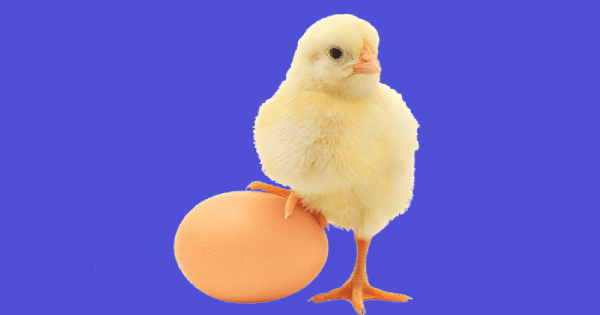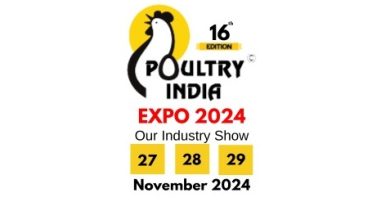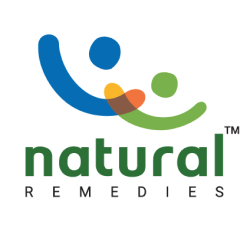Amelioration of Mycotoxicosis in Poultry

Ram Singh
Buffalo Nutrition Division
ICAR-Central Institute for Research on Buffaloes, Hisar-125001 (Haryana)
The term “mycotoxin” is derived from “mykes” meaning fungi and “toxicon” meaning poison which are produced by moulds. There are over 200 species of moulds that produce mycotoxins. Mycotoxins produce a variety of diseases called “mycotoxicosis”. Analysis of animal feed and feed ingredients samples worldwide has indicated that mycotoxins are commonly prevalent in majority of feed ingredients. The research says that in most cases, mycotoxicosis is chronic and caused by low-level ingestion of fungal metabolites, resulting in measurable decline in performance and the occurrence of nonspecific changes, including subcutaneous haemorrhage in birds and immunosuppression.
The analytical data also indicated that mycotoxin contaminated feeds commonly contain more than just a single mycotoxin which could be due to single mould producing more than one mycotoxin on a single commodity, or different moulds producing separate mycotoxins at the same time on a single commodity or different commodities each contaminated with a separate mycotoxin used to prepare a feed. Aflatoxins (AF), ochratoxin A (OTA), zearalenone (ZEN), fumonisins (FUM), trichothecenes such as deoxynivalenol (DON), diacetoxyscirpenol (DAS) and T-2 toxin are some of the mycotoxins affecting poultry production. Thus, mycotoxins can affect the animals either individually, additively or synergistically in the presence of more than one mycotoxin, and may affect various organs such as gastrointestinal tract, liver, and immune system, essentially resulting in reduced productivity of the birds and mortality in extreme cases.
The economic losses associated with mycotoxins include poor growth, reduced egg production, reduced feed conversion, increased morbidity and mortality, carcass condemnation poor egg shell quality, reduced fertility, leg problems and increased susceptibility to disease. However, the degree of losses depends upon the concentration, type and interaction of mycotoxins as well as the nutritional plane of the birds. It is therefore, imperative to ameliorate the ill effects of mycotoxicosis in various avian species. This communication is based on various experiments carried out by the author.
Detoxification of mycotoxins: When the poultry farmer suspects that feed is contaminated with mycotoxins he can use the mycotoxin detoxifying agents. One way of reducing the mycotoxin exposure to animal is to decrease their bioavailability by including various mycotoxin adsorbing agents in the compound feed. These mycotoxin adsorbing agents are also called binding agents, adsorbents or binders. They should be able to bind the mycotoxins in contaminated feed without dissociating in the gastrointestinal tract of the animal. In this way the toxin-adsorbing agent complex passes through the animal and is excreted through faeces, thus, preventing or minimizing mycotoxin exposure of animal. Mycotoxin adsorbing agents such as HSCAS (Hydrated Sodium and Calcium Aluminosilicate), bentonites, montmorillonites, diatomaceous earth, etc. can be used for this purpose. Another way is the degradation of mycotoxins into non-toxic metabolites by the use of biotransforming agents. The use of enzymes that transform mycotoxins is also prevalent. These enzymes are incorporated in to the feed and biotransform mycotoxins in to derived compounds within the animal, which the animal later eliminates through urine and feces. In some cases, these animal derived compounds can be less toxic or not toxic at all, compared to the original mycotoxin.
Detoxification by use of inorganic binders: In the process of understanding impact of aflatoxicosis, it revealed that a dietary concentration of 300 ppb aflatoxin B1 impaired the performance in terms of body weight gain, feed intake, and utilization efficiency of feed, energy and protein, and also suppressed both cell mediated and humoral immunity in broiler chickens during 0-6 weeks of age. Aflatoxicosis resulted in atrophy of bursa of Fabricius, hypertrophy of liver and histopathological changes in liver characterized by marked destruction of hepatic cords, dilatation and congestion of central veins, mild adenomatous necrotic foci and mild to moderate deposition of fats in the hepatic parenchyma. Diatomaceous earth, sodium bentonite and zeolite at 0.5 or 1% level, alone or in combination, were partially efficacious in ameliorating the adverse effects of 300 ppb aflatoxin B1. Among these three binders tested, diatomaceous earth appeared to be the least efficacious in ameliorating aflatoxicosis in broiler chickens.
Addition of diatomaceous earth at 0.2% level to 0.5 and 1.0 ppm aflatoxin contaminated feed for 35 days, revealed significant improvement characterized by decreased severity of lesions in lymphoid organs of broiler chickens. Also, addition of 0.2% diatomaceous earth can be effectively used to reduce the histotoxic effects of aflatoxin on lymphoid organs in broiler chickens. Inclusion of activated charcoal (200 ppm) to the 0.5 ppm aflatoxin contaminated feed provided protection against harmful effects of aflatoxin on performance and biochemistry of broiler chickens. Inclusion of hydrated sodium calcium aluminosilicate (HSCAS) @ 0.5% to the 2.5 ppm aflatoxin contaminated feed for 21 days, resulted in lowered aflatoxin residues in livers and kidneys of birds fed AFB1 plus HSCAS when compared with birds fed AFB1 alone. The decrease in the bioavailability of AFB1 caused by the HSCAS reduced aflatoxin residues in liver and kidney, However, addition of HSCAS could not completely prevent the toxic effects of AFB1 in broiler chickens. In another study, HSCAS addition at 0.5 and 1.0% levels to 2.5 ppm aflatoxin contaminated feed moderately ameliorated the negative effects of aflatoxin on performance and biochemical parameters in quails. Inclusion of 0.5% HSCAS to aflatoxin (0.5 and 1.0 ppm) containing feed diminished the effects of aflatoxin on performance, relative organ weights, hematological and biochemical parameters associated with 0.5 ppm aflatoxin in turkeys. The addition of 0.5% HSCAS significantly recovered the growth inhibitory effects caused by 2.5 ppm aflatoxin. The increases in relative organ weights and the decreases in serum biochemical values caused by aflatoxin were significantly alleviated to differing degrees by HSCAS and HSCAS was found to be protective against the effects of aflatoxin in young growing broilers.
Addition of HSCAS (Milbond-TX @ 1.0%) to aflatoxin (4.0 ppm) contaminated feed improved the performance, changes in organ weights, serum chemistry changes, and gross pathology observed in chicks fed aflatoxin. HSCAS also effectively reduced the incidence and severity of the hepatic and renal histopathology changes associated with aflatoxicosis. Incorporation of HSCAS and yeast cell wall component with two doses (0.1 and 0.2%) to aflatoxin (1.0 and 2.0 ppm) contaminated feed provided significant improvements by adding of HSCAS and less improvements by yeast cell wall components in performance, biochemistry and histopathology changes associated with aflatoxicosis.
Addition of 1.0% synthetic zeolite to 2.5 ppm aflatoxin contaminated feed significantly diminished the adverse effects of aflatoxin on performance and reduced the incidence and severity of hepatic histopathology lesions caused by aflatoxin in broiler chickens. Supplementation of 0.5% synthetic zeolite to 2.5 ppm aflatoxin containing feed resulted in significantly improved the adverse effects of aflatoxin on performance, hematology and biochemistry in broiler chickens. Inclusion of nanozeolite (0.25- 1.0%) into aflatoxin (500 ppb) contaminated feed significantly diminished the toxic effects of aflatoxin on performance and biochemistry in broiler chickens. Incorporation of sodium bentonite (@ 0.3%) to 2.5 ppm aflatoxin contaminated broiler diet provided significant improvements in liver histopatholgy and biochemistry. Supplementation of natural bentonite (0.3%) to aflatoxin contaminated (30-135 ppb) broiler diet reduced the severity of hepatic histopathology changes associated with aflatoxicosis. Sodium bentonite partially neutralized the effects of 3.0 ppm aflatoxin when included at 0.5% in the diet of broiler chickens. Supplementation of SB at 0.2, 0.4 and 0.6% levels to 2.5 ppm aflatoxin contaminated diet significantly ameliorated the deleterious effect of aflatoxin on humoral immunity. SB also improved the adverse effects of aflatoxin on performance and hematology and carry-over of aflatoxin from feed to eggs. In another study, addition of sodium bentonite at 0.3% level to 5.0 ppm aflatoxin contaminated broiler diet significantly improved the adverse effects of aflatoxin on performance, biochemistry and gross and histopathology of liver.
Supplementation of 2.0% clinoptilolite (CLI) to broiler diet containing 0.5 ppm aflatoxin ameliorated the toxic effect of aflatoxin and CLI provided significant improvement against aflatoxin toxicity in performance, biochemistry and liver histopathology. However, addition of CLI at 2.0% level to layer diet contaminated with 2.5 ppm aflatoxin provided no improvement in egg quality. Addition of CLI at 1.5 and 2.5% levels to broiler diet containing 2.5 ppm aflatoxin provided significant improvement in performance of broilers. Addition of 1.5% CLI also ameliorated the toxic effects of aflatoxin on hematology and biochemistry and reduced the number of affected broilers and the severity of gross and histopathological lesions caused by aflatoxicosis. CLI (1.5%) addition into broiler diet contaminated with lower levels of aflatoxin (50 and 100 ppb) significantly diminished the negative effect of aflatoxin on performance of broilers. Addition of 1.5% CLI also improved the changes in gross and histopathology of target organs and humoral immunity associated with aflatoxicosis. Addition of sodic montmorillonite (@ 0.25 and 0.5%) to aflatoxin (5.0 ppm) contaminated diet provided partial improvements in the biochemical changes associated with aflatoxicosis in broiler chickens. Inclusion of 0.5% montmorilonite clay into 4.0 ppm aflatoxin contaminated diet provided significant protection on growth performance, serum biochemistry, and the relative organ weight associated with aflatoxicosis in broilers.
Detoxification by use of organic binders: Use of mannan oligosaccharides (MOS) and Saccharomyces cerevisiae (at the rate 0.05%, 0.1%, 0.2%) and their combination ameliorated the effect of aflatoxin partially or completely in dose dependent manner. The 0.2% level of MOS and SC is more effective than 0.05% and 0.1% level in counteracting the 300 ppb of aflatoxin in the feed. Inclusion of 0.1% MOS to 2.0 ppm aflatoxin containing feed significantly ameliorated the adverse effects of aflatoxin on performance of quails. Supplementation of MOS (@ 0.11%) to 2.5 ppm aflatoxin contaminated feed decreased the gastrointestinal absorption of aflatoxin and its level in tissues in laying birds. Incorporation of 0.1% esterified glucomannan (EGM) to feed containing 2 ppm aflatoxin significantly ameliorated the toxic effects of aflatoxin on hematology and biochemistry. Addition of 0.1% EGM also reduced the number of affected broilers and the severity of lesions in the target organs caused by aflatoxin in broiler chickens. Inclusion of EGM at 0.05% and 0.1% levels to aflatoxin (60 and 120 ppb) contaminated diet resulted in significant improvements in performance, histopathology and leg deformity caused by aflatoxicosis. Addition of 0.05% EGM also removed the adverse effects of 100 ppb aflatoxin on serum biochemistry in ducklings. Inclusion of EGM at 0.05 and 0.1% levels to 100 ppb aflatoxin contaminated feed was effective in reduction of AFB1-induced hepatic injury in ducklings. Inclusion of EGM (0.1%), SB (0.5%) and humic acid (0.2-1%) to 254 ppb aflatoxin contaminated broiler diet ameliorated the toxic effect of aflatoxin against humoral immunity. The addition of EGM, SB and humic acid to the aflatoxin contaminated diet ameliorated the negative effects of aflatoxin on ND antibody titers, but humic acid proved to be more efficacious in ameliorating the detrimental effect of aflatoxin on humoral immunity against ND. EGM is effective in counteracting the adverse effects of mycotoxins, including T-2 toxin. Addition of 0.05% EGM to a naturally contaminated feed effectively alleviated the growth depression caused by the contaminated diet. Incorporation of EGM (0.1%) into aflatoxin contaminated (300 ppb) broiler diet significantly decreased the detrimental effects of aflatoxin on performance parameters, biochemistry and organ morphology. Incorporation of EGM at 0.025%, 0.5% and 0.1% level to 300 ppb aflatoxin contaminated feed for 42 days, resulted in partial improvement in feed efficiency in broiler chickens. Dietary EGM reduced cost of feeding. Among the various treatments, 0.1% of EGM addition gave the best results. Addition of EGM (0.1%) and HSCAS (@ 1%) to 2 ppm aflatoxin contaminated broiler diet provided significant improvements in performance and relative organ weights associated with aflatoxicosis. Incorporation of Saccharomyces cerevisiae extract (SCE) to aflatoxin (1.2 ppm) contaminated broiler diet and drinking water for 28 d, resulted in positive preventive effects on the relative weight of the liver, histopathology, production performance and biochemical parameters. Inclusion of 0.1% yeast cell wall into 250 and 500 ppb aflatoxin contaminated broiler diet was found to be effective in preventing the detrimental effects of aflatoxin on broiler performance. Incorporation of SCE (@ 0.5, 1.0, 2.0 and 2.5%) in the quail diet containing 0.5 ppm aflatoxin suppressed the aflatoxicosis in quail tissues leading to improvement of growth performances and enhancement of expression levels of neural and gonadal genes. However, supplementation of 0.5% SCE and 0.75% natural zeolite to broiler diet contaminated with 1 ppm aflatoxin showed that addition of 0.75% zeolite did not reduce any of the adverse effects, whereas, supplemention of SCE moderately ameliorated the effects in respect of performance and biochemistry. Addition of SCE at 0.2% level to 2 ppm aflatoxin contaminated quail diet significantly recovered the deleterious effects of aflatoxin on performance, egg production and egg weight. The addition of 0.2% SCE also provided significant improvements in hatchability and fertility of quails. In another study addition of SCE at 0.1% level to 2 ppm aflatoxin contaminated quail diet significantly reduced the effect of aflatoxin on performance. Addition of SCE at 0.1% level to 100 ppb aflatoxin contaminated quail diet partially ameliorated the ill effects of aflatoxin on performance of quails. Added 0.1% yeast (P. kudriavzevii) to AFB1 (100 ppb) contaminated broiler diet for 21 days, was effective in ameliorating the adverse effects of aflatoxin on production performance of broiler chickens. In another study, incorporation of glucan derived from yeast cell wall (YCW) at 0.2% level into 1.0 ppm aflatoxin contaminated feed partially ameliorated the detrimental effects of aflatoxin on performance and egg quality. In one of the studies, experimentally induced ochratoxicosis with 200 ppb ochratoxin resulted in reduced production performance, enlargement of liver, regression of bursa, decreased total protein, haemoglobin and increased level of uric acid, creatinine, ALP, SGOT, SGPT and H/L ratio and immuno-suppression. Inclusion of Saccharomyces cerevisiae at 0.1% level to the ochratoxin contaminated diet ameliorated the ill effects of 200 ppb ochratoxin on production performance, relative weight of liver and bursa, serum protein, uric acid, creatinine, haemoglobin, ALP, SGPT, SGOT, H/L ratio and immune response of broiler chickens during 0-6 weeks of age. Also, dietary level of 0.1% of Saccharomyces cerevisiae in ochratoxin contaminated diet improved the welfare aspects like growth, feed intake, H/L ratio, immunity and health of stressed birds. However, inclusion of Saccharomyces cerevisiae (0.05 or 0.1%) in basal diet did not prove beneficial. Supplementation of silymarin (is known to have antioxidant) at the rate of 0.05% to 1.5 ppm aflatoxin contaminated feed for 60 days in quails, was not able to mitigate the negative effect of aflatoxin on the metabolism and production performance of laying quails.
Detoxification by use of miscellaneous detoxifying agents: During aflatoxicosis the protein level of the new or changed diet should be increased to 25 to 30%. Alternatively 1 to 2 kg methionine and 1.5 kg lysine hydrochloride may be supplemented per ton of feed with normal protein content. Supplementation of DL-Methionine (DLM) at 500 ppm or methionine hydroxy analogue (MHA) at 769 ppm level in 500 ppb aflatoxin contaminated diet ameliorated the adverse effects of aflatoxicosis in Japanese quails. Both supplementation of DLM at 500 ppm and MHA at 769 ppm level in aflatoxin contaminated diet were equally efficacious in ameliorating the adverse effects of aflatoxicosis in growing Japanese quails. Fats and oil are beneficial in reducing aflatoxicosis and improving energy value of feed. Supplementation of selenium @ 2 to 3g, vegetable oil @ 10-20 kg with 300 g Choline chloride and 1 gram of vitamin E per tonne of feed is beneficial. Water-soluble vitamins and vitamin A should be added twice of the amount of required level. Supplementation of ascorbic acid @ 300 mg/kg diet is beneficial to counteract some of the adverse effects (viz. depressed egg production and electrolyte imbalances) of ochratoxin in laying hens under normal as well as elevated ambient temperature, at which ochratoxin is more toxic. Synthetic antioxidant like butylated hydroxyl toluene (BHT) inclusion in the diet of broiler chickens at 1000 ppm level provided moderate protection against the adverse effects of aflatoxicosis in broiler chickens. In another study, aflatoxicosis caused by 250 ppb level of dietary aflatoxin resulted in depression of growth, feed intake, feed conversion efficiency; enlargement of liver, regression of bursa, decreased total protein, cholesterol, uric acid, and increased level of SGPT and SGOT activity. Inclusion of choline to the 250 ppb aflatoxin contaminated feed partially ameliorated the adverse effects of aflatoxicosis on production performance, organ weights and blood biochemistry in broiler chickens. Herbal mixture containing Acacia catechu 25%, Phylanthus niruri 40%, Andrographis paniculata 25% and base material 10% @ 0.5 to 0.75 kg per ton reduces the effect of aflatoxicosis. Supplementation of vitamin A (15.000 IU) to 100 ppb aflatoxin contaminated feed partially decreased the negative effects of aflatoxin on performance, biochemistry and pathology in quails. Addition of conjugated linoleic acid at 0.2 and 0.4% levels to aflatoxin (200 and 300 ppb) contaminated feed resulted in partial improvement in performance and biochemical parameters. CLA also diminished the detrimental effects of aflatoxin on liver pathology in broilers. Inclusion of 0.35% humic acid and 0.35% dried brewer yeast into aflatoxin (1 and 2 ppm) containing feed provided partial improvement in performance, hematology and biochemistry associated with aflatoxin toxicity in broiler chickens. Humic acid was found to be more efficacious than brewer yeast in ameliorating the adverse effects of aflatoxicosis in broiler chickens. Incorporation of Ca propionate at 0.25 and 0.5% levels to 100 ppb aflatoxin contaminated diet appeared to be effective in reducing toxicity of aflatoxin on performance and hepatic enzyme activities in broilers. Supplementation of Curcuma longa at 1% level to the 1 ppm aflatoxin contaminated feed for 42 d, partially reversed the oxidative stress in broiler chickens. However, C. longa significantly improved the antioxidant status in induced aflatoxicosis and partially protected against the cytotoxic effects of AFB1 in broiler chickens. Turmeric powder (0.5%) and HSCAS (0.5%) to 1 ppm aflatoxin contaminated broiler diet and the adsorbents demonstrated protective action in the deleterious effect of aflatoxin on performance, biochemistry, antioxidant functions and histopathology. Ammonia treatment to broiler diet contaminated with 1.0 ppm aflatoxin provided significant improvements in performance and hematology of broiler chickens. Addition of Na-selenite @ 0.4 ppm into the 300 ppb aflatoxin contaminated feed for 21 days, could effectively inhibit AFB1– induced apoptosis and cell cycle blockage in renal cells of broiler chickens. EGM prevented the Fusarium mycotoxin-induced alterations in haematology, serum chemistry and biliary IgA concentration. However, addition of 0.5% zeolite in the diet did not diminish the adverse effects of T-2 toxin and DAS on performance of broilers. The ill effects of 1.0 ppm DAS on feed intake and body weight were counteracted by dietary supplementation of 0.75 or 1.5 g/kg of the Eubacterium-based product. Supplementation of additional zinc at 40 ppm diet (total 80mg/kg diet) to the aflatoxin contaminated diet ameliorated the ill effects of 250 ppb aflatoxin on body weight gain, feed intake and feed conversion ratio, relative weight of liver, spleen and bursa, blood protein and uric acid, haemoglobin, SGPT, SGOT, H/L ratio and immune response of broiler chickens during 0-6 weeks of age. Addition of methionine 0.1% above the NRC recommendation in starting (total 0.6% Met) and finishing diet (total 0.48% Met) in the aflatoxin contaminated diet improved the production performance, relative weight of liver, spleen and bursa, blood biochemical and haematological parameters and immune response during 0-6 weeks age of broiler chickens in experimentally induced with aflatoxicosis (250 ppb). Dietary supplementation of ascorbic acid (AA) at 250 and 500 ppm; and butylated hydroxyanisole (BHA) at 1000 and 2000 ppm levels provided partial amelioration of aflatoxicosis caused by 1 ppm total aflatoxin in broiler chickens. BHA was more efficacious than AA in ameliorating the adverse effects of aflatoxicosis in broiler chickens. Also, inclusion of butylated hydroxytoluene (BHT) at 1000 ppm level in the 1 ppm aflatoxin contaminated feed provided moderate protection against the adverse effects of aflatoxicosis in broiler chickens. In another study, addition of vitamin E (200 mg/kg) to the ochratoxin contaminated diet improved the production performance, relative weight of liver and bursa, blood biochemical, haematological parameters and immune response during 0-6 weeks age of broiler chickens in experimentally induced ochratoxicosis caused by 200 ppb of dietary ochratoxin. Supplementation of 200 mg/kg vitamin E above the requirement of birds during ochratoxicosis resulted in welfare of birds. However, supplementation of vitamin E (100 or 200 mg/kg) in basal diet did not prove beneficial. Ochratoxin in feed increased the requirement of dietary vitamin E. In another study, Ochratoxin contamination at the rate of 150 ppb in the feed impaired the production performance assessed through body weight gain, feed intake, feed utilization efficiency and survivability in broiler chicken during 0-6 weeks of age. Experimentally induced ochratoxicosis with 150 ppb ochratoxin level resulted in increased relative weight of liver, decreased relative weight of bursa, thymus, decreased total protein, cholesterol, haemoglobin and increased uric acid, creatinine, ALP, SGOT, SGPT level and H/L ratio in blood. Induced ochratoxicosis resulted in suppression of both cell mediated and humoral immunity during 0-6 weeks of age in broiler chickens. Ochratoxicosis resulted in severe outer tubular degeneration with rupture of basement membrane, heterophils infiltration with MNCs infiltration, focal severe necrosis of tubular epithelium, hyperplasia of tubular epithelium and interstitial inflammation in kidney. Liver sample showed cell necrosis, mild to moderate fatty changes, vacuolar change in hepatocytes, and some area fibrosed and some amount of glycogen infiltration in hepatocytes. Inclusion of S. cerevisiae at 0.1% level along with 100 mg vit.E per kg diet or S. cerevisiae at 0.075% level along with 200 mg vit.E per kg diet to the ochratoxin (150 ppb) contaminated feed ameliorated the adverse effects of ochratoxicosis during 0-6 weeks of age in broiler chickens. The feed-cost per unit gain reduced on supplementation of S. cerevisiae at 0.1% level along with 100 mg vit.E per kg ochratoxin contaminated diet but could not be compensated due to additional cost of additives. Another study was undertaken to evaluate the impact of aflatoxin, ochratoxin and their interaction in terms of genes expression, gut health, patho-physiology and growth performance; and to evaluate the efficacy of MOS and butyric acid salt, and their combination in combating toxicity of aflatoxin and ochratoxin in broiler chickens. Dietary addition of both AFB1 and OTA affected overall performance, relative organ weight, blood-biochemicals, cellular architecture of liver, intestine and kidney, gut morphometry and immunity of broiler chickens. OTA was more toxic than AFB1 as assessed through growth performance (BWG, FI and FCR), immunity and gut morphometry. Synergistic relation existed between OTA and AFB1 when both mycotoxins were given simultaneously in the diet of broiler chickens. The relative expression of gene EH was decreased in AFB1, OTA and their combination however expression was less pronounced for OTA. Genes for growth IGF-1 was down regulated in all toxin fed groups but more pronounced for OTA. Addition of AFB1, OTA and their combination had no effect on ornithine decarboxylase gene which was responsible for cell proliferation (carcinogenesis). MOS at both levels (0.15 and 0.3%), and NaB at 500 mg/kg diet was proved beneficial in reducing both AFB1 and OTA toxicity partially, while the combination of 0.3% MOS+500 mg/kg NaB was effective in counteracting their toxic effect maximally, as accessed through growth, immunity and gut morphometry. There was progressive improvement in genes linked with growth (IGF) and antioxidant property (GST) and inflammation related genes (IL-10 and TLR-2) were not stimulated due to dietary supplementation of MOS. Combination of 0.3% MOS+500 mg/kg NaB in diet is beneficial to counteract the ill effects of both aflatoxin B1 and ochratoxin A rather using MOS or NaB alone in 300 ppb AFB1+250 ppb OTA contaminated feed in broiler chickens.
Processing of contaminated feeds for aflatoxin inactivation: The physical and chemical treatments, found useful for inactivation of aflatoxins in contaminated feeds or ingredients includes:
i. Raising the moisture levels up to 20% and autoclaving at 5 PSI for one hour followed by drying in an oven at 80°C with or without addition of sodium hydroxide (15 g per kg).
ii. Agitation of feed with Ca (OH)2 @ 2% followed by addition of formaldehyde at 15% moisture followed by autoclaving at 15 PSI for half an hour and drying.
iii. Ensiling after addition of liquor ammonia (6%, v/w) at 20% moisture for 20 days followed by drying at 35°C in an oven. However, the feasibility of such processing methods has not reached to the farmers’ door. Moreover, such processing methods may not be suitable for poultry feeds. Therefore, the best way of using contaminated feeds are accurate estimation of contents for different mycotoxins for the determination of the safe incorporation of such feeds in compounded feeds.
Formulation of Mycotoxin binders: Based on a decade’s intensive research efforts on management of mycotoxicosis in poultry, two mycotoxin binders namely Mycodetox B1 and Mycodetox B2 were formulated. The Mycodetox B1 contained sodium bentonite (20.69%), zeolite (27.59%), activated charcoal (6.90%) mannan oligosaccharide (13.79%), methionine (17.24%), butylated hydroxytoluene (3.35%) and choline (10.34%). The Mycodetox B2 formulated consisted of sodium bentonite (30.30%), zeolite (30.30%), MOS (15.15%), methionine (18.94%), butylated hydroxyanisole (3.74%) and Zinc (1.52%). Mycodetox B1 at the rate of 145 and Mycodetox B2 at the rate of 132g per quintal of feed were added. Both the binders were tested in various avian species for their efficacy in ameliorating mycotoxicosis and were able to completely ameliorate the mycotoxicosis. Both the binders were equally efficacious in ameliorating mycotoxicosis in poultry.
Thus, various mycotoxin detoxifying agents are used to ameliorate mycotoxicosis. Mycotoxin detoxifying agents such as zeolite, activated charcoal, sodium bentonite, mannan oligosaccharides, Saccharomyces cerevisiae, methionine, choline, butylated hydroxytoluene, butylated hydroxyanisole and zinc can be effectively used in combating deleterious effects of mycotoxicosis in poultry. In literature these detoxifying agents have been named as mycotoxin enterosorbents, binders, sequestrants, adsorbents, toxin sorbents, mycotoxin degrading agents etc. The two mycotoxin binders namely, Mycodetox B1 and Mycodetox B2 formulated based on a decade’s research and tested in various avian species completely ameliorated the ill effects of mycotoxicosis in poultry.




